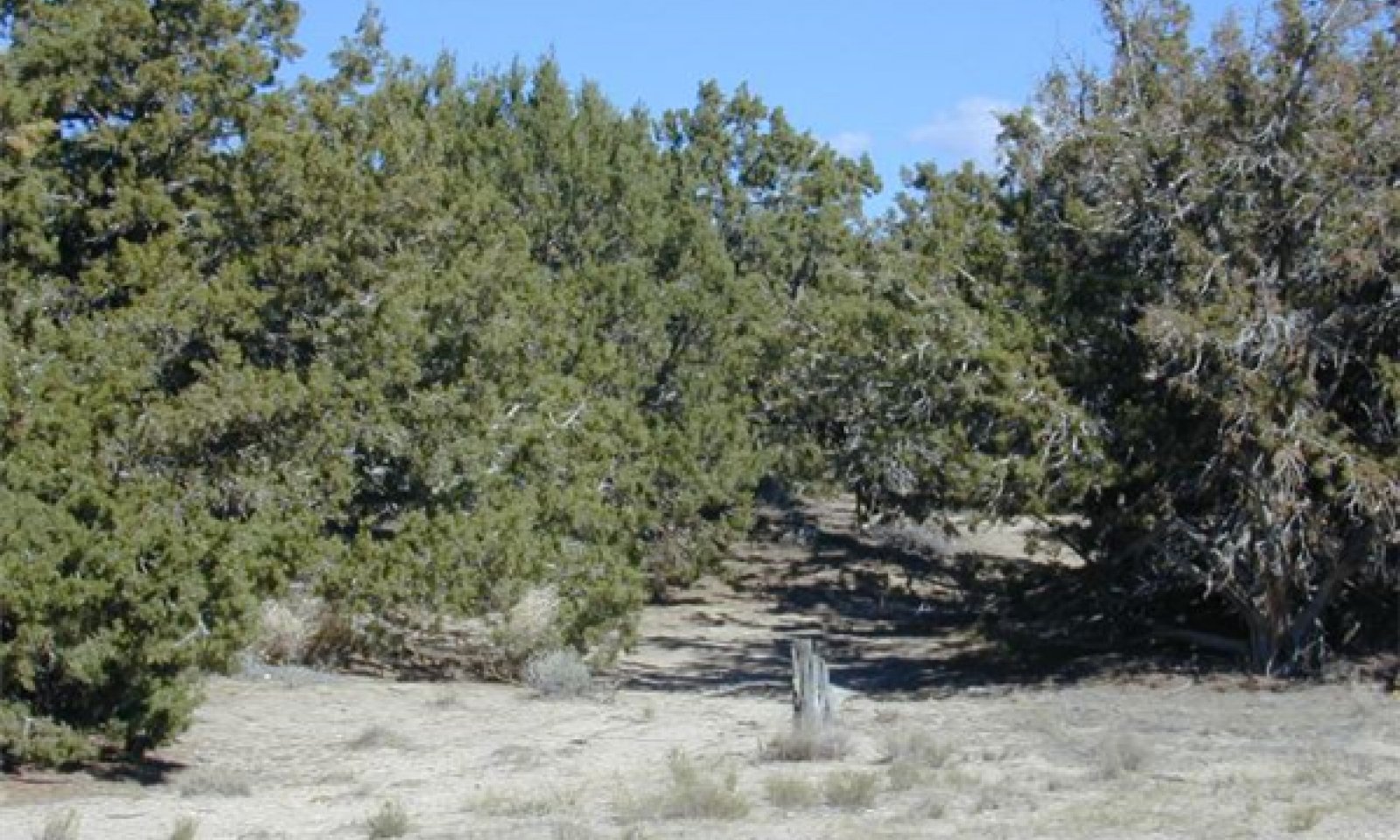
Semidesert Shallow Hardpan (Utah Juniper)
Scenario model
Current ecosystem state
Select a state
Management practices/drivers
Select a transition or restoration pathway
- Transition T1a More details
- Transition T2a More details
- Transition T2b More details
- Transition T3a More details
- Transition T3b More details
- Transition T4a More details
-
No transition or restoration pathway between the selected states has been described
Target ecosystem state
Select a state
Description
This state has three community phases influenced by disturbance, such as fire or drought. Utah juniper is the dominant tree in all community phases, while the understory changes the most with disturbance. Fire will generally remove much of the shrub layer, increasing re-sprouting shrubs like rabbitbrush (community phase 1.2). Long term drought can reduce herbaceous understory (community phase 1.3).
Submodel
Description
This state is the current analog of the reference state and includes non-native species. This state is less resilient and resistance to disturbance because of the presence of non-native species. There are three community phases in this state that are influenced by drought and fire and grazing.
Submodel
Description
This state occurs when native herbaceous vegetation is either removed or replaced largely by non-native invasive annual species. This state also occurs when fire is removed from the system. There are two community phases within this state.
Submodel
Description
This state occurs when the native herbaceous understory is removed and replaced with non-native invasive species generally through long term grazing and fire. Sprouting shrubs dominated the shrub layer and annual invasive species dominate the herbaceous layer. There are two community phases described in this state.
Submodel
Description
This state occurs when a seeding takes place on the site. Typical species include both native and non-native bunchgrasses and forbs. Shrubs and trees are often reduced in this state. There are two community phases described in this state.
Submodel
Mechanism
Disturbance: Long-term improper grazing (including season long, overstocking, wrong season, etc.) and/or prolonged drought; lengthening of fire period to > 100 years resulting in a dense tree/shrub overstory, reduction of native perennial vegetation.
Mechanism
Long-term improper grazing (including season long, overstocking, wrong season, etc.) and/or prolonged drought; shortened fire frequency allows site to be dominated by sprouting shrubs, including Yellow rabbitbrush and Broom snakeweed; significant reduction of perennial bunchgrass species. Highly combustible fine fuels from invasive annuals dominate the community. Fire frequency is typically 10 – 30 years.
Mechanism
Long-term improper grazing (including season long, overstocking, wrong season, etc.) and/or prolonged drought; shortened fire frequency allows site to be dominated by sprouting shrubs, including Yellow rabbitbrush and Broom snakeweed; significant reduction of perennial bunchgrass species. Highly combustible fine fuels from invasive annuals dominate the community. Fire frequency is typically 10 – 30 years.
Mechanism
Mechanical chaining of Utah juniper where present and/or chemical treatment of undesirable shrubs with regeneration of native herbaceous species, or seeding of introduced, native or combination rangeland grass and forb species.
Model keys
Briefcase
Add ecological sites and Major Land Resource Areas to your briefcase by clicking on the briefcase (![]() ) icon wherever it occurs. Drag and drop items to reorder. Cookies are used to store briefcase items between browsing sessions. Because of this, the number of items that can be added to your briefcase is limited, and briefcase items added on one device and browser cannot be accessed from another device or browser. Users who do not wish to place cookies on their devices should not use the briefcase tool. Briefcase cookies serve no other purpose than described here and are deleted whenever browsing history is cleared.
) icon wherever it occurs. Drag and drop items to reorder. Cookies are used to store briefcase items between browsing sessions. Because of this, the number of items that can be added to your briefcase is limited, and briefcase items added on one device and browser cannot be accessed from another device or browser. Users who do not wish to place cookies on their devices should not use the briefcase tool. Briefcase cookies serve no other purpose than described here and are deleted whenever browsing history is cleared.
Ecological sites
Major Land Resource Areas
The Ecosystem Dynamics Interpretive Tool is an information system framework developed by the USDA-ARS Jornada Experimental Range, USDA Natural Resources Conservation Service, and New Mexico State University.


